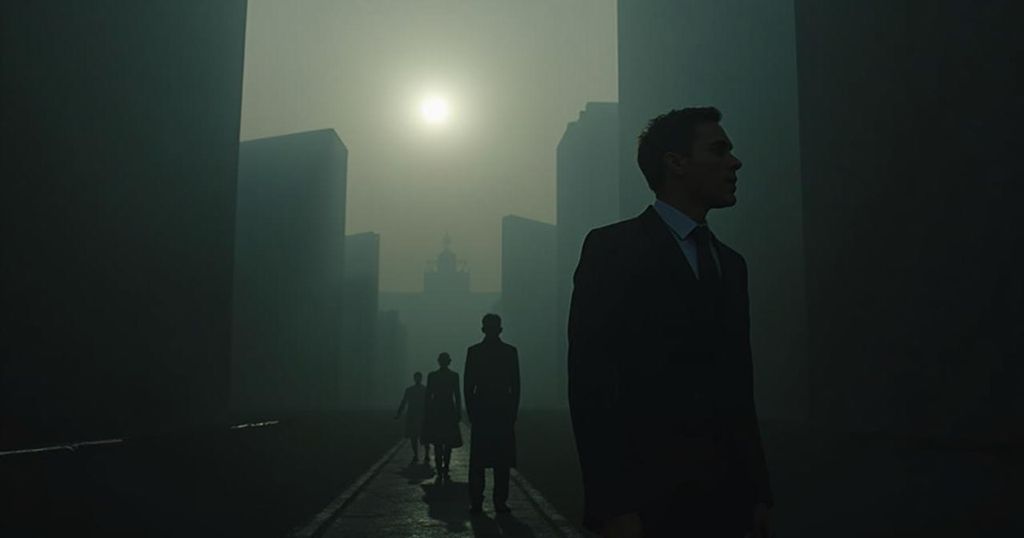Brady Corbet’s “The Brutalist”: A Triumph of Vision over Budget Constraints
Brady Corbet’s “The Brutalist” is a 3.5-hour film exploring the artistic and commercial struggles of architects, symbolizing Hollywood’s challenges. It tells the story of architect László Tóth, navigating powerful patrons while preserving his vision. Shot on a modest $10 million budget, Corbet’s film reflects his commitment to authentic storytelling amidst industry pressures, garnering critical acclaim and likened to masterpieces like “There Will Be Blood.”
Brady Corbet, the visionary writer-director, weaves a striking analogy between the art of filmmaking and the meticulous craft of architecture. In his recent cinematic endeavor, “The Brutalist,” a sprawling 3.5-hour epic, he captures the artistic trials and the harsh economic realities faced by architects, paralleling it with the struggles of filmmakers in Hollywood. The film centers around László Tóth, played by Adrien Brody, a Hungarian Jewish architect who, after surviving internment at Buchenwald, finds himself in America, grappling with the demands of a powerful industrialist, Harrison Lee Van Buren, portrayed by Guy Pearce. Through this narrative, Corbet reflects on the compromises required in both artforms, remarking, “The relationship between a patron and an artist is a perverse one. There are some extraordinary benefactors and companies that are ethical, but that’s rare.” Having grown up in the film industry, Corbet transitioned from child actor to direct impressive features such as “The Childhood of a Leader” and “Vox Lux.” Yet, his latest work signifies a significant leap forward in his artistic vision. Praised as a masterpiece at the Venice Film Festival, “The Brutalist” invites comparisons to cinematic giants like “There Will Be Blood”. Spanning decades, starting from the zenith of American power post-World War II to the political climate of the Reagan era, it is presented in the magnificent VistaVision format, reminiscent of classic 70mm productions. Remarkably, this ambitious project was crafted with a modest budget of $10 million, a fraction of typical blockbuster costs. Corbet passionately shares, “We cut every corner we could to make sure that every single cent was on screen. It was a Herculean effort, and I wouldn’t recommend it to anyone.” 7 long years shaped this film’s journey, fraught with obstacles like COVID restrictions and geopolitical conflicts. Corbet’s commitment has kept him away from his family, driving home the project’s personal stakes. Despite the trials, he confidently asserts, “I never thought, ‘I wish I had $30 million more.'” Corbet relishes in the freedom that accompanies a smaller budget, avoiding the creative constraints imposed by studio executives. Much like the architectural style his film references, “The Brutalist” offers a bold and potentially divisive artistic statement—one that resonates with his vision, unshackled by excess.
The essence of “The Brutalist” lies in its intricate exploration of the struggles that both architects and filmmakers face in remaining true to their artistic visions in a world dominated by commercial pressures. Corbet’s unique perspective draws from his background as an actor and now a director, allowing him to reflect on the often tumultuous relationship between creative individuals and their benefactors. His journey in creating this film against numerous odds reveals the lengths to which artists will go to retain their integrity in a commodified landscape.
In essence, Brady Corbet’s “The Brutalist” stands not only as a narrative about architectural struggles but also as a poignant commentary on the film industry itself. By embracing challenges and navigating a tight budget with creative ingenuity, Corbet challenges the status quo, offering a film that is both a personal reflection and a broader critique of artistic compromise amidst commercial demands. The film exemplifies a rebellious artistry that captures the essence of what it means to create in a world filled with constraints, making it a remarkable achievement in independent filmmaking.
Original Source: variety.com




Post Comment